Chenyi Lei
SMILE: SeMantic Ids Enhanced CoLd Item Representation for Click-through Rate Prediction in E-commerce SEarch
Oct 14, 2025



Abstract:With the rise of modern search and recommendation platforms, insufficient collaborative information of cold-start items exacerbates the Matthew effect of existing platform items, challenging platform diversity and becoming a longstanding issue. Existing methods align items' side content with collaborative information to transfer collaborative signals from high-popularity items to cold-start items. However, these methods fail to account for the asymmetry between collaboration and content, nor the fine-grained differences among items. To address these issues, we propose SMILE, an item representation enhancement approach based on fused alignment of semantic IDs. Specifically, we use RQ-OPQ encoding to quantize item content and collaborative information, followed by a two-step alignment: RQ encoding transfers shared collaborative signals across items, while OPQ encoding learns differentiated information of items. Comprehensive offline experiments on large-scale industrial datasets demonstrate superiority of SMILE, and rigorous online A/B tests confirm statistically significant improvements: item CTR +1.66%, buyers +1.57%, and order volume +2.17%.
GRADE: Personalized Multi-Task Fusion via Group-relative Reinforcement Learning with Adaptive Dirichlet Exploratio
Oct 09, 2025Abstract:Overall architecture of the personalized multi-objective ranking system. It comprises: (1) a Feature Center and Prerank Model for initial feature processing and candidate generation; (2) a Multi-Task Learning (MTL) model predicting various user feedback signals; (3) a Multi-Task Fusion (MTF) module (our proposed GRADE framework) that learns personalized weights ($w_1, \dots, w_n$); these weights are then applied to calculate final scores and sorted to generate a blended ranking by the Blended Ranking Model, which ultimately delivers results to users.
InfoGain-RAG: Boosting Retrieval-Augmented Generation via Document Information Gain-based Reranking and Filtering
Sep 16, 2025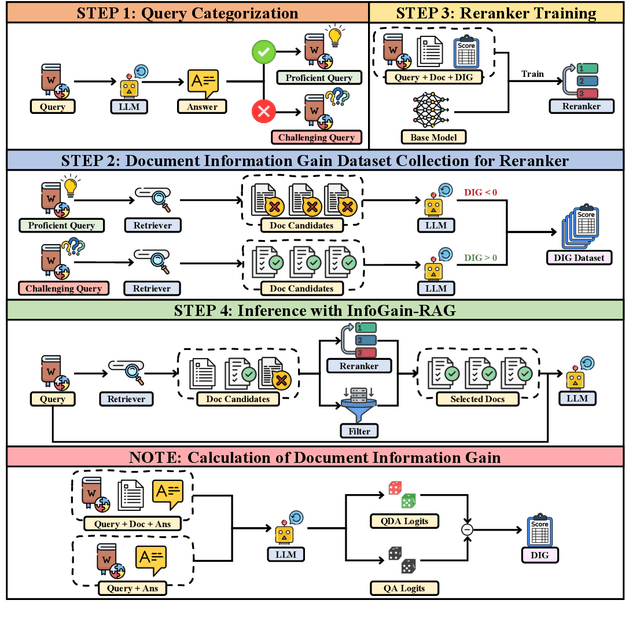
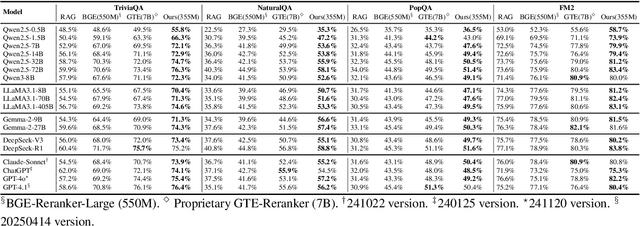
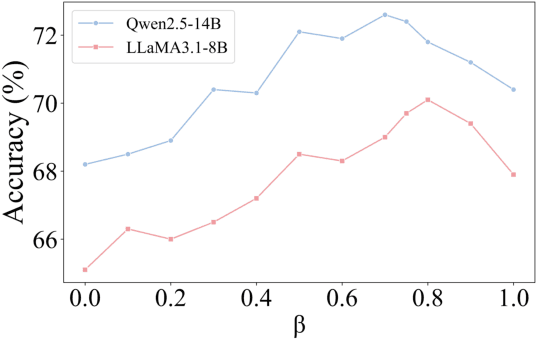
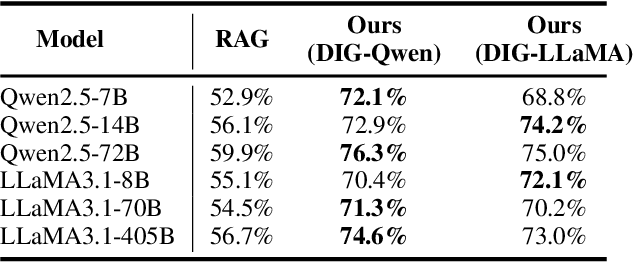
Abstract:Retrieval-Augmented Generation (RAG) has emerged as a promising approach to address key limitations of Large Language Models (LLMs), such as hallucination, outdated knowledge, and lacking reference. However, current RAG frameworks often struggle with identifying whether retrieved documents meaningfully contribute to answer generation. This shortcoming makes it difficult to filter out irrelevant or even misleading content, which notably impacts the final performance. In this paper, we propose Document Information Gain (DIG), a novel metric designed to quantify the contribution of retrieved documents to correct answer generation. DIG measures a document's value by computing the difference of LLM's generation confidence with and without the document augmented. Further, we introduce InfoGain-RAG, a framework that leverages DIG scores to train a specialized reranker, which prioritizes each retrieved document from exact distinguishing and accurate sorting perspectives. This approach can effectively filter out irrelevant documents and select the most valuable ones for better answer generation. Extensive experiments across various models and benchmarks demonstrate that InfoGain-RAG can significantly outperform existing approaches, on both single and multiple retrievers paradigm. Specifically on NaturalQA, it achieves the improvements of 17.9%, 4.5%, 12.5% in exact match accuracy against naive RAG, self-reflective RAG and modern ranking-based RAG respectively, and even an average of 15.3% increment on advanced proprietary model GPT-4o across all datasets. These results demonstrate the feasibility of InfoGain-RAG as it can offer a reliable solution for RAG in multiple applications.
DiffusionGS: Generative Search with Query Conditioned Diffusion in Kuaishou
Aug 25, 2025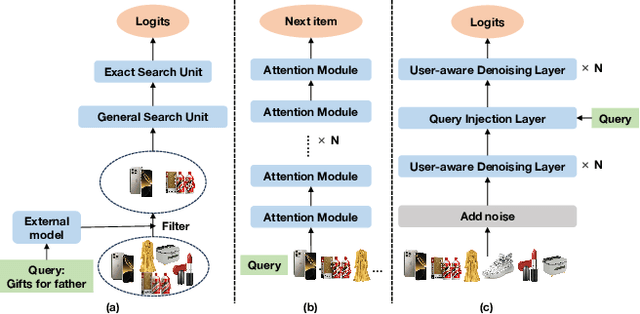
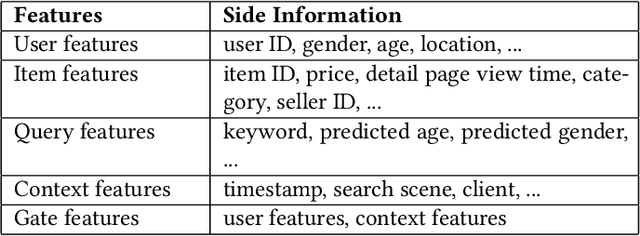
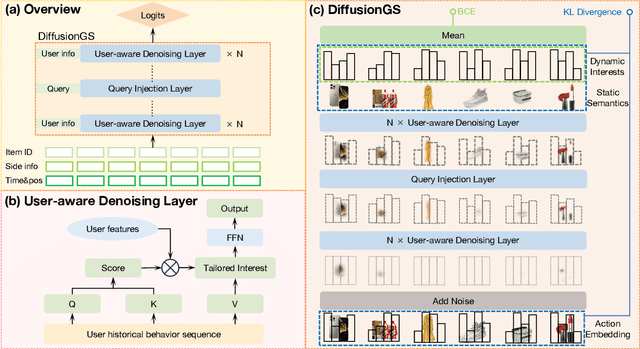
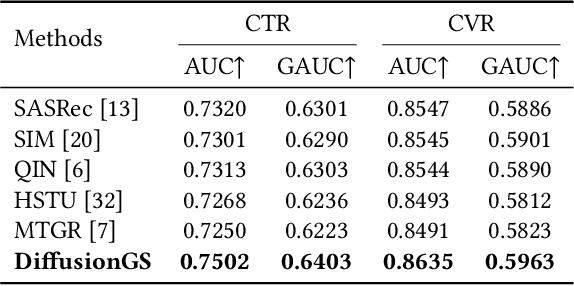
Abstract:Personalized search ranking systems are critical for driving engagement and revenue in modern e-commerce and short-video platforms. While existing methods excel at estimating users' broad interests based on the filtered historical behaviors, they typically under-exploit explicit alignment between a user's real-time intent (represented by the user query) and their past actions. In this paper, we propose DiffusionGS, a novel and scalable approach powered by generative models. Our key insight is that user queries can serve as explicit intent anchors to facilitate the extraction of users' immediate interests from long-term, noisy historical behaviors. Specifically, we formulate interest extraction as a conditional denoising task, where the user's query guides a conditional diffusion process to produce a robust, user intent-aware representation from their behavioral sequence. We propose the User-aware Denoising Layer (UDL) to incorporate user-specific profiles into the optimization of attention distribution on the user's past actions. By reframing queries as intent priors and leveraging diffusion-based denoising, our method provides a powerful mechanism for capturing dynamic user interest shifts. Extensive offline and online experiments demonstrate the superiority of DiffusionGS over state-of-the-art methods.
OneSug: The Unified End-to-End Generative Framework for E-commerce Query Suggestion
Jun 07, 2025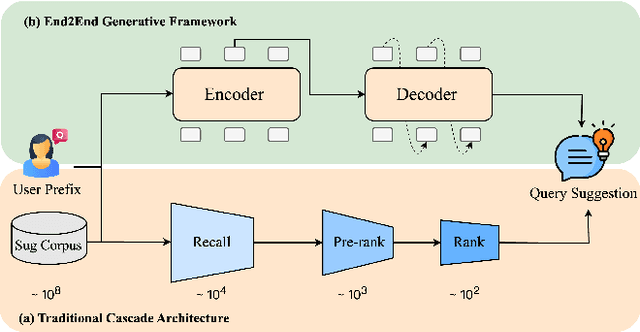
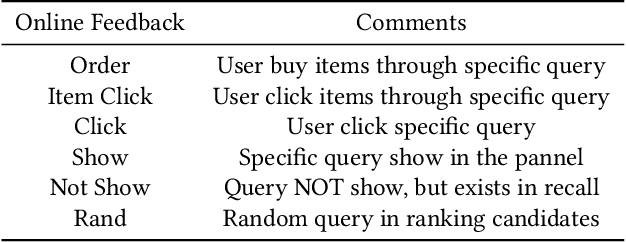
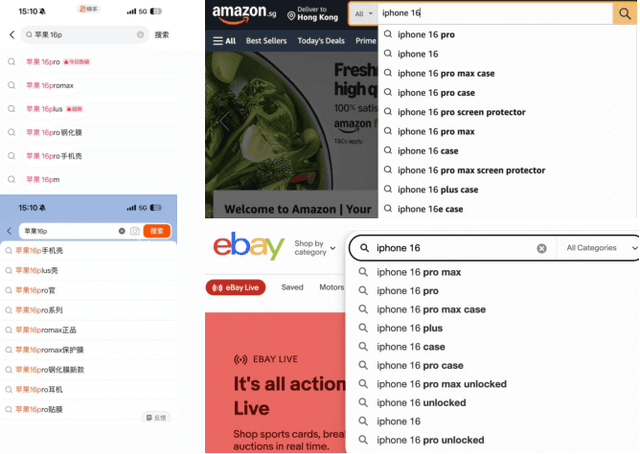
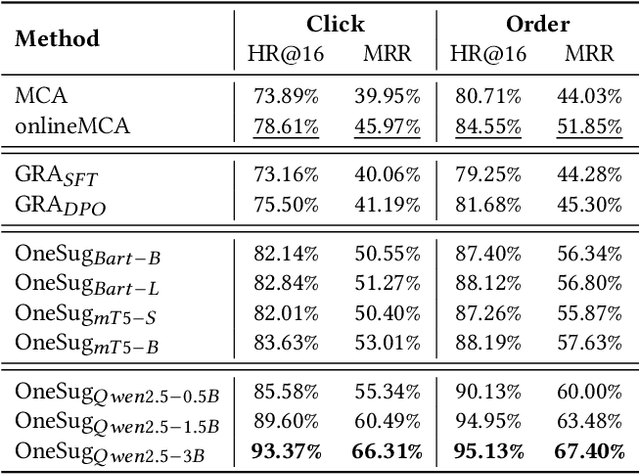
Abstract:Query suggestion plays a crucial role in enhancing user experience in e-commerce search systems by providing relevant query recommendations that align with users' initial input. This module helps users navigate towards personalized preference needs and reduces typing effort, thereby improving search experience. Traditional query suggestion modules usually adopt multi-stage cascading architectures, for making a well trade-off between system response time and business conversion. But they often suffer from inefficiencies and suboptimal performance due to inconsistent optimization objectives across stages. To address these, we propose OneSug, the first end-to-end generative framework for e-commerce query suggestion. OneSug incorporates a prefix2query representation enhancement module to enrich prefixes using semantically and interactively related queries to bridge content and business characteristics, an encoder-decoder generative model that unifies the query suggestion process, and a reward-weighted ranking strategy with behavior-level weights to capture fine-grained user preferences. Extensive evaluations on large-scale industry datasets demonstrate OneSug's ability for effective and efficient query suggestion. Furthermore, OneSug has been successfully deployed for the entire traffic on the e-commerce search engine in Kuaishou platform for over 1 month, with statistically significant improvements in user top click position (-9.33%), CTR (+2.01%), Order (+2.04%), and Revenue (+1.69%) over the online multi-stage strategy, showing great potential in e-commercial conversion.
A Comprehensive Survey on Cross-Domain Recommendation: Taxonomy, Progress, and Prospects
Mar 18, 2025Abstract:Recommender systems (RS) have become crucial tools for information filtering in various real world scenarios. And cross domain recommendation (CDR) has been widely explored in recent years in order to provide better recommendation results in the target domain with the help of other domains. The CDR technology has developed rapidly, yet there is a lack of a comprehensive survey summarizing recent works. Therefore, in this paper, we will summarize the progress and prospects based on the main procedure of CDR, including Cross Domain Relevance, Cross Domain Interaction, Cross Domain Representation Enhancement and Model Optimization. To help researchers better understand and engage in this field, we also organize the applications and resources, and highlight several current important challenges and future directions of CDR. More details of the survey articles are available at https://github.com/USTCAGI/Awesome-Cross-Domain Recommendation-Papers-and-Resources.
DV-FSR: A Dual-View Target Attack Framework for Federated Sequential Recommendation
Sep 10, 2024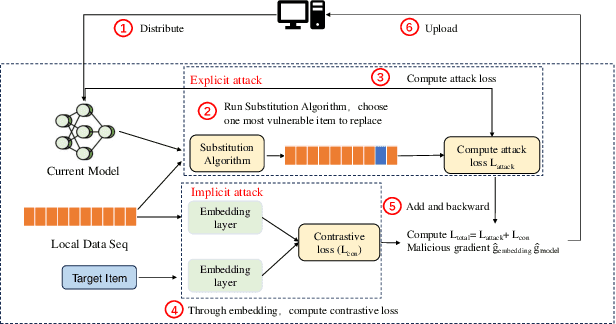
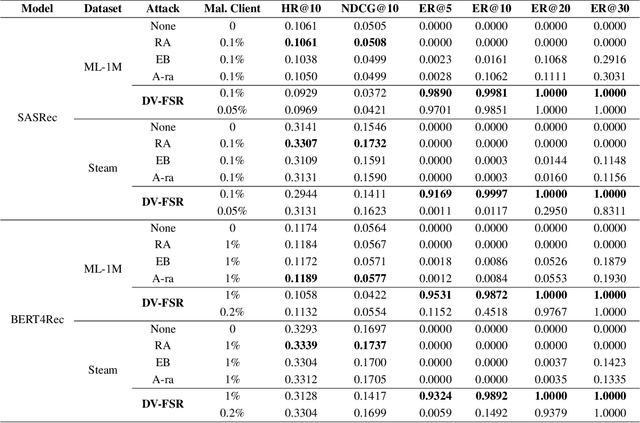

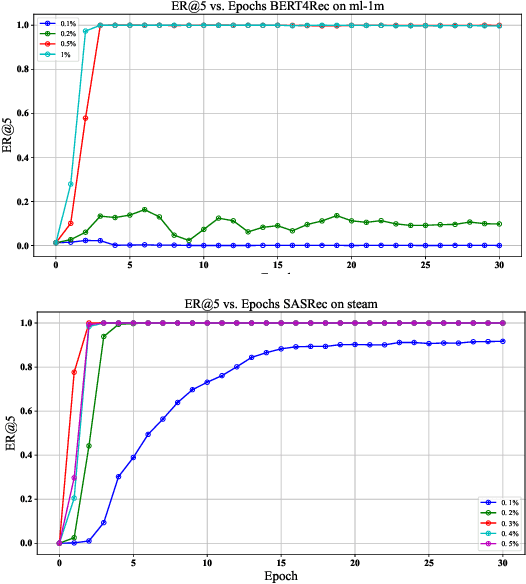
Abstract:Federated recommendation (FedRec) preserves user privacy by enabling decentralized training of personalized models, but this architecture is inherently vulnerable to adversarial attacks. Significant research has been conducted on targeted attacks in FedRec systems, motivated by commercial and social influence considerations. However, much of this work has largely overlooked the differential robustness of recommendation models. Moreover, our empirical findings indicate that existing targeted attack methods achieve only limited effectiveness in Federated Sequential Recommendation (FSR) tasks. Driven by these observations, we focus on investigating targeted attacks in FSR and propose a novel dualview attack framework, named DV-FSR. This attack method uniquely combines a sampling-based explicit strategy with a contrastive learning-based implicit gradient strategy to orchestrate a coordinated attack. Additionally, we introduce a specific defense mechanism tailored for targeted attacks in FSR, aiming to evaluate the mitigation effects of the attack method we proposed. Extensive experiments validate the effectiveness of our proposed approach on representative sequential models.
GradCraft: Elevating Multi-task Recommendations through Holistic Gradient Crafting
Jul 29, 2024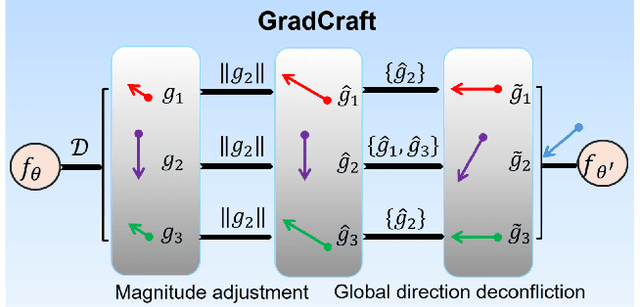

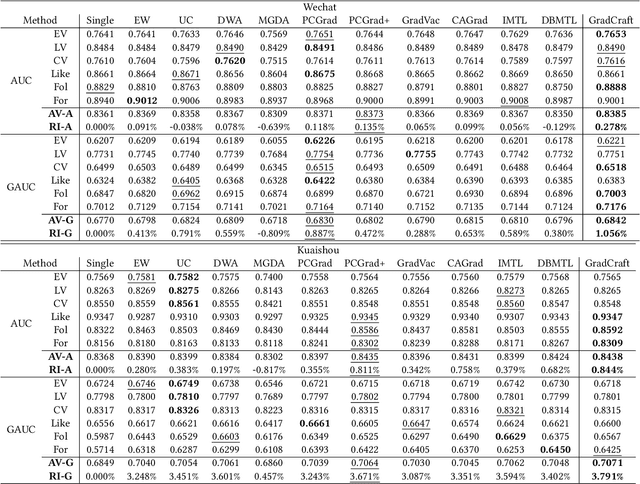
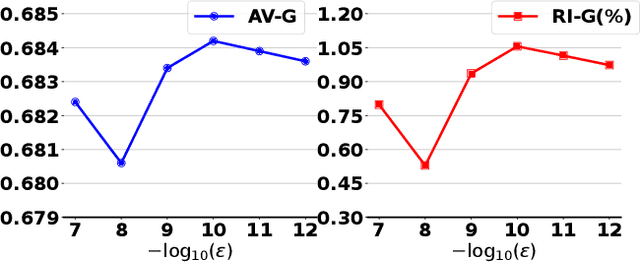
Abstract:Recommender systems require the simultaneous optimization of multiple objectives to accurately model user interests, necessitating the application of multi-task learning methods. However, existing multi-task learning methods in recommendations overlook the specific characteristics of recommendation scenarios, falling short in achieving proper gradient balance. To address this challenge, we set the target of multi-task learning as attaining the appropriate magnitude balance and the global direction balance, and propose an innovative methodology named GradCraft in response. GradCraft dynamically adjusts gradient magnitudes to align with the maximum gradient norm, mitigating interference from gradient magnitudes for subsequent manipulation. It then employs projections to eliminate gradient conflicts in directions while considering all conflicting tasks simultaneously, theoretically guaranteeing the global resolution of direction conflicts. GradCraft ensures the concurrent achievement of appropriate magnitude balance and global direction balance, aligning with the inherent characteristics of recommendation scenarios. Both offline and online experiments attest to the efficacy of GradCraft in enhancing multi-task performance in recommendations. The source code for GradCraft can be accessed at https://github.com/baiyimeng/GradCraft.
Learning Transferable Time Series Classifier with Cross-Domain Pre-training from Language Model
Mar 19, 2024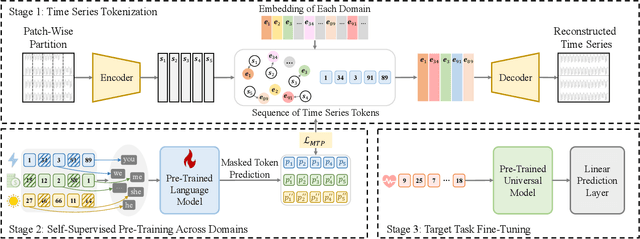



Abstract:Advancements in self-supervised pre-training (SSL) have significantly advanced the field of learning transferable time series representations, which can be very useful in enhancing the downstream task. Despite being effective, most existing works struggle to achieve cross-domain SSL pre-training, missing valuable opportunities to integrate patterns and features from different domains. The main challenge lies in the significant differences in the characteristics of time-series data across different domains, such as variations in the number of channels and temporal resolution scales. To address this challenge, we propose CrossTimeNet, a novel cross-domain SSL learning framework to learn transferable knowledge from various domains to largely benefit the target downstream task. One of the key characteristics of CrossTimeNet is the newly designed time series tokenization module, which could effectively convert the raw time series into a sequence of discrete tokens based on a reconstruction optimization process. Besides, we highlight that predicting a high proportion of corrupted tokens can be very helpful for extracting informative patterns across different domains during SSL pre-training, which has been largely overlooked in past years. Furthermore, unlike previous works, our work treats the pre-training language model (PLM) as the initialization of the encoder network, investigating the feasibility of transferring the knowledge learned by the PLM to the time series area. Through these efforts, the path to cross-domain pre-training of a generic time series model can be effectively paved. We conduct extensive experiments in a real-world scenario across various time series classification domains. The experimental results clearly confirm CrossTimeNet's superior performance.
Unified Language-Vision Pretraining in LLM with Dynamic Discrete Visual Tokenization
Sep 29, 2023
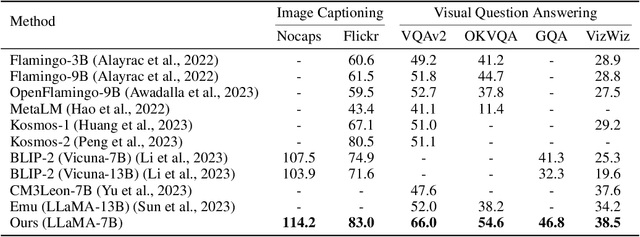

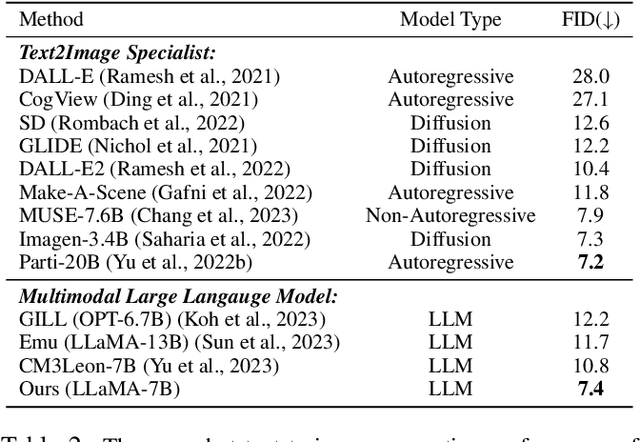
Abstract:Recently, the remarkable advance of the Large Language Model (LLM) has inspired researchers to transfer its extraordinary reasoning capability to both vision and language data. However, the prevailing approaches primarily regard the visual input as a prompt and focus exclusively on optimizing the text generation process conditioned upon vision content by a frozen LLM. Such an inequitable treatment of vision and language heavily constrains the model's potential. In this paper, we break through this limitation by representing both vision and language in a unified form. Specifically, we introduce a well-designed visual tokenizer to translate the non-linguistic image into a sequence of discrete tokens like a foreign language that LLM can read. The resulting visual tokens encompass high-level semantics worthy of a word and also support dynamic sequence length varying from the image. Coped with this tokenizer, the presented foundation model called LaVIT can handle both image and text indiscriminately under the same generative learning paradigm. This unification empowers LaVIT to serve as an impressive generalist interface to understand and generate multi-modal content simultaneously. Extensive experiments further showcase that it outperforms the existing models by a large margin on massive vision-language tasks. Our code and models will be available at https://github.com/jy0205/LaVIT.
 Add to Chrome
Add to Chrome Add to Firefox
Add to Firefox Add to Edge
Add to Edge